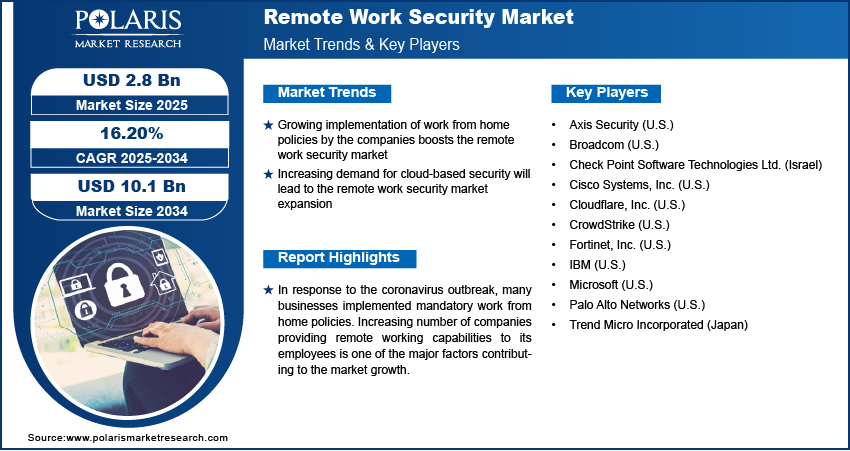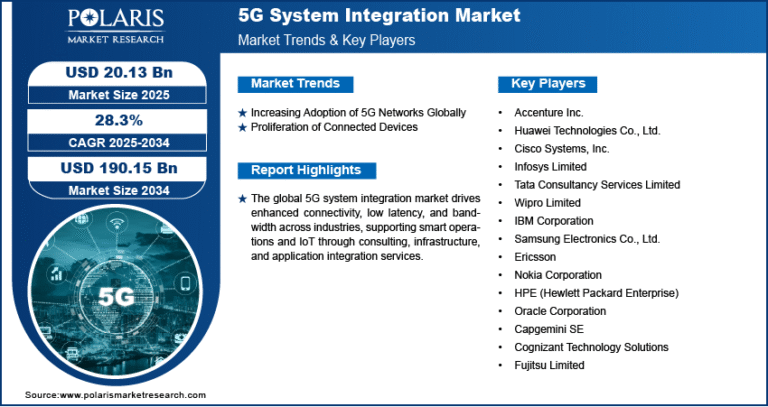Remote Work Security Market to Hit USD 10.1 Billion By 2034, Registering a 16.20% CAGR

The global Remote Work Security Market was valued at USD 2.4 billion in 2024 and is expected to grow at a CAGR of 16.20% from 2025 to 2034. Increased remote workforce and cyber threat concerns are major contributors to market expansion.
Market Trends & Insights:
- Zero Trust Architecture Adoption: Organizations are rapidly moving toward Zero Trust frameworks that enforce strict identity verification, regardless of user location. This model aligns well with decentralized workforces.
- Cloud-Based Security Solutions: The migration of workloads to cloud platforms is accelerating the demand for cloud-native security services, which offer scalability, flexibility, and ease of management for distributed teams.
- AI and Machine Learning Integration: Advanced threat detection and behavior analytics are being powered by AI and ML, enabling real-time monitoring and proactive mitigation of security incidents.
- Endpoint Security Emphasis: With employees using personal or unmanaged devices for work, endpoint security has become a vital layer of defense against malware, ransomware, and phishing attacks.
- Secure Collaboration Tools: There is a growing emphasis on embedding security into communication and productivity platforms like video conferencing, file sharing, and project management tools.
Market Size & Forecast
Market size value in 2025 USD – 2.8 billion
Revenue forecast in 2034 USD – 10.1 billion
CAGR – 16.20% from 2025 – 2034
Request for Free Sample:
Market Overview:
The Remote Work Security Market has witnessed significant growth over the past few years, driven by the global shift to remote and hybrid work models. As organizations increasingly embrace flexible work environments, ensuring secure access to data, networks, and systems has become a critical priority. This market encompasses a broad range of solutions, including secure access service edge (SASE), endpoint protection, identity and access management (IAM), cloud security, and data loss prevention (DLP). The market is being reshaped by technological advancements, heightened cyber threats, and regulatory requirements aimed at protecting sensitive enterprise data beyond traditional office boundaries.
Key Market Growth Drivers:
- Expansion of Remote & Hybrid Work Models: Enterprises globally are implementing long-term or permanent remote work policies, necessitating robust and scalable security infrastructures.
- Rising Cybersecurity Threats: The increase in cyberattacks targeting remote endpoints, phishing scams, and unsecured home networks is prompting investment in advanced security frameworks.
- Digital Transformation Acceleration: Organizations accelerating digital initiatives are simultaneously adopting modern cybersecurity measures tailored to remote operations.
- Increased BYOD Culture: The bring-your-own-device trend, though cost-effective, introduces security vulnerabilities, boosting demand for endpoint and mobile security solutions.
- Demand for Real-Time Threat Monitoring: As cyber threats grow more sophisticated, the need for continuous monitoring and rapid incident response is becoming essential.
Market Challenges:
- Integration Complexity: Integrating new security tools with existing IT systems and workflows can be challenging, especially for legacy infrastructure.
- User Awareness & Training: A significant number of breaches stem from human error. Ensuring employees understand and follow security protocols remains an ongoing challenge.
- Balancing Usability and Security: Overly strict security measures can impact user experience and productivity, forcing businesses to strike a delicate balance.
- Scalability Concerns: Some security solutions struggle to scale efficiently with growing remote teams or fluctuating workforce dynamics.
- Cost Constraints for SMEs: Small and medium-sized enterprises often face budgetary constraints that limit access to comprehensive Remote Work Security Market.






